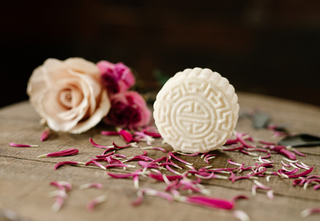Shampoo bars have gained popularity in recent years as a sustainable alternative to traditional liquid shampoos. These solid bars offer a range of benefits, from reducing plastic waste to using natural ingredients. In this blog post, we will delve into the lifecycle of shampoo bars, examining their production, use, and disposal. By understanding the environmental impact of shampoo bars, we can make informed choices that align with our sustainability goals.
Production: Shampoo bars are typically made using natural ingredients and minimal packaging, making them a more eco-friendly option compared to liquid shampoos. The production process involves mixing ingredients, molding the bars, and allowing them to cure. Many brands, like Viori, prioritize sustainability by using biodegradable or compostable packaging materials.
Use: Using a shampoo bar is slightly different from using liquid shampoo, but it's easy to adapt to this new method. Simply wet your hair, rub the bar between your hands to create a lather, and then apply it to your hair. Massage your scalp and hair, and rinse thoroughly. Shampoo bars often last longer than liquid shampoos, reducing the frequency of purchases and packaging waste.
Environmental Benefits:
Conclusion: Shampoo bars offer a sustainable alternative to traditional liquid shampoos, with numerous environmental benefits throughout their lifecycle. From reducing plastic waste to conserving water resources, these bars provide a greener option for hair care. By making the switch to shampoo bars, we can contribute to a more sustainable future while still maintaining healthy and beautiful hair.
Remember, every small change we make in our daily routines can have a significant impact on the environment. So, why not start with something as simple as switching to a shampoo bar? Together, we can make a difference.
Production: Shampoo bars are typically made using natural ingredients and minimal packaging, making them a more eco-friendly option compared to liquid shampoos. The production process involves mixing ingredients, molding the bars, and allowing them to cure. Many brands, like Viori, prioritize sustainability by using biodegradable or compostable packaging materials.
Use: Using a shampoo bar is slightly different from using liquid shampoo, but it's easy to adapt to this new method. Simply wet your hair, rub the bar between your hands to create a lather, and then apply it to your hair. Massage your scalp and hair, and rinse thoroughly. Shampoo bars often last longer than liquid shampoos, reducing the frequency of purchases and packaging waste.
Environmental Benefits:
a. Plastic Waste Reduction: One of the most significant advantages of shampoo bars is their ability to reduce plastic waste. Traditional liquid shampoos come in plastic bottles that often end up in landfills or oceans. By switching to shampoo bars, we can significantly decrease our plastic footprint and contribute to a cleaner environment.
b. Water Conservation: Shampoo bars require less water during production compared to liquid shampoos. Additionally, their solid form eliminates the need for water-heavy formulations. By using shampoo bars, we can conserve water resources and reduce our overall water consumption.
c. Biodegradability: Many shampoo bars are made with biodegradable ingredients, meaning they can break down naturally without harming the environment. This is in contrast to liquid shampoos, which often contain synthetic chemicals that can persist in the environment for a long time.
Disposal: When it comes to disposing of shampoo bars, the process is relatively simple. As they are typically made with biodegradable or compostable ingredients, you can either compost them at home or dispose of them in your regular trash. Be sure to check the packaging or manufacturer's instructions for specific disposal recommendations.
b. Water Conservation: Shampoo bars require less water during production compared to liquid shampoos. Additionally, their solid form eliminates the need for water-heavy formulations. By using shampoo bars, we can conserve water resources and reduce our overall water consumption.
c. Biodegradability: Many shampoo bars are made with biodegradable ingredients, meaning they can break down naturally without harming the environment. This is in contrast to liquid shampoos, which often contain synthetic chemicals that can persist in the environment for a long time.
Disposal: When it comes to disposing of shampoo bars, the process is relatively simple. As they are typically made with biodegradable or compostable ingredients, you can either compost them at home or dispose of them in your regular trash. Be sure to check the packaging or manufacturer's instructions for specific disposal recommendations.
Conclusion: Shampoo bars offer a sustainable alternative to traditional liquid shampoos, with numerous environmental benefits throughout their lifecycle. From reducing plastic waste to conserving water resources, these bars provide a greener option for hair care. By making the switch to shampoo bars, we can contribute to a more sustainable future while still maintaining healthy and beautiful hair.
Remember, every small change we make in our daily routines can have a significant impact on the environment. So, why not start with something as simple as switching to a shampoo bar? Together, we can make a difference.

